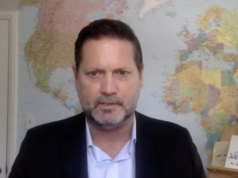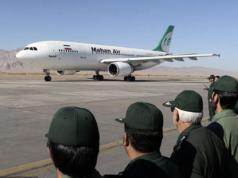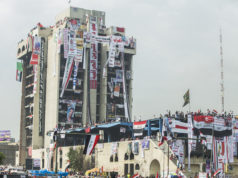According to the Jewish calendar, the 69th anniversary of the Farhud, an event comparable to Kristallnacht for Iraqi Jews, falls this week. The term Farhud denotes a “violent dispossession,” a pogrom which took place on June 1, 1941.
In a two-day period Arab mobs went on a rampage in Baghdad and other cities in Iraq. Nearly 150 Jews were killed and more than 2,000 injured, some 900 Jewish homes were destroyed and looted, and hundreds of Jewish-owned shops were robbed and destroyed. With the complicity of Iraqi police and military, mobs looted from Jews and brutally raped and killed fellow citizens simply because they practiced a different religion.
The pogrom of 1941 was the culmination of a campaign to destroy an ancient Jewish population. Yet very little attention has ever been given to the campaign against the Jews of modern Iraq. With the exception of the Babylonian Jewry Heritage Center, not a single museum, including notable Holocaust museums, focus on the Nazi links of the very influential Haj Amin al-Husseini and his aggression against Middle Eastern Jewry.
The Farhud is an crucial historical event because it was the catalyst for the end of 2700 years of Jewish presence in Iraq. Jews had flourished in Iraq 1200 years prior to the Muslim conquest in 634 AD. The Farhud also points to the link between Nazism and Islamic extremism, a connection often overlooked.
Although he was initially convicted by the British authorities who controlled the spoils of the Turkish Empire, also known as the Palestine Mandate, for inciting a campaign of violence against Jews in the 1920s, Amin al-Husseini was eventually pardoned by the British High Commissioner Sir Herbert Samuel. It has been theorized that the British believed pacifying al-Husseini and appointing him the Grand Mufti of Jerusalem would alleviate the turmoil in the region. Yet al-Husseini never wavered from his position of eradicating the Jewish presence from the region and used his newly established powers to further inflame mobs.
Haj Amin al-Husseini, now the Mufti of Jerusalem, became a Nazi agent after meeting Adolf Eichmann who was an architect of the Holocaust. With Nazi funds al-Husseini organized the Arab Revolt of 1936-39. The Mufti obtained Hitler’s assurance in 1941 that after dealing with the Jews of Europe, the Nazis would treat the Jews of the Middle East similarly.
Ultimately, one must ask how the ethnic cleansing of an ancient community of 150,000 people has been totally ignored and forgotten. And yet, the experiences of Iraq’s Jewish population is not an anomaly among Middle Eastern Jews. Around a million Middle Eastern Jews, including my family, became refugees and endured in tiny, transit camps for years in a poverty-stricken and newly created Israel. Today, fewer than 3,000 Jews remain in Middle Eastern lands, many living in poverty and fear.
Reut Cohen is a JPC contributor and author of the blog www.reutrcohen.com.





